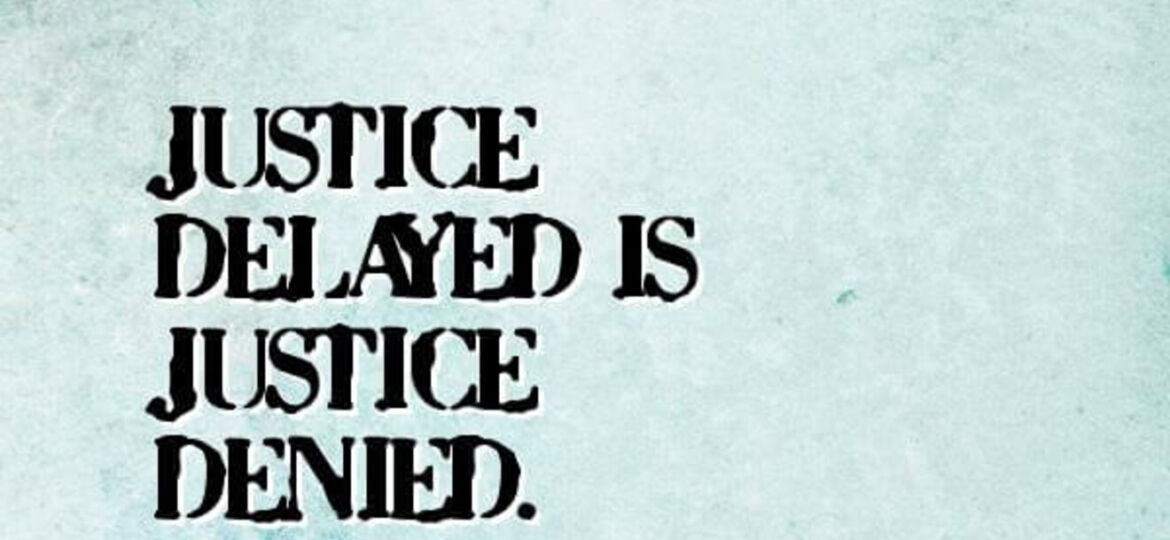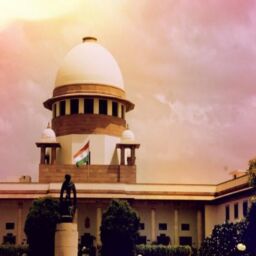
ABSTRACT
Justice delayed is justice denied is a legal maxim that has been controversial over the centuries now. It connotes the basic notion behind legal jurisprudence that justice should be provided within a reasonable time. Constitution as being the power source of this notion provides us with article 21 which gives its citizen, right to life and personal liberty. Constitution fails on its own when it deals with the right to speedy trial contemplated in article 21. This article seeks to analyze causes and solution to ensure speedy trials by pondering upon many rationales which affect the justice delivery system. The overpopulated country with less total of judges is the most accused scenario. Inadequate investigating agencies and scarcity of other dispute resolution forums are highly debatable issues that are discussed in length and attempted to explain in our writing.
INTRODUCTION
The famous quote “Justice delayed is justice denied” by William E Gladstone, Former British Statesman and Prime Minister in the late 1800s, highlights a very crucial point and directly aims at the state of our current day status of the judicial system in a developing nation like India. This maxim lays down emphasis on the equitable relief which is accessible to the injured party but its forthcoming is not so timely and it’s the same as having no remedy at all. Judiciary is considered to be the fourth pillar of our democracy and despite all the success of the Indian judiciary it has suffered and has been suffering from a severe structural problem that prevents it from functioning properly and in a timely fashion.
STATISTICS
As of 01.09.2020, there are 62,054* cases pending in the supreme court of India and over 45 lakhs cases are pending in various High courts.
At the district and subordinate court levels, the number of pending cases stands at a shocking 3.14 crore.
As per the reports, it would take over 300 years to clear the excess and that as well if no new cases are enrolled amid that time. The document states while the subordinate court has a shortage of 5748 judicial officers, the 24 high courts face 406 vacancies.
The approved strength of the lower judiciary much higher at 22,474, while the working strength is only 16,726.
In the case of high courts, the strength approved is 1079, and the actual strength is 673.
The Supreme Court has a full strength of 31 judges, but it has only 25 judges in total, leaving six vacancies. Thus, the total number of vacancies in SC, the HCs, and the lower courts come to 6160 judges.
CAUSES OF SUCH HUGE PENDENCY OF CASES
Deficiency in the number of judges: The basic question that arises is what if we increase the number of judges, will the adjudicatory process speedup, well the answer
can not be negative, but it will contribute to the process. According to a statement of former law
Minister of India there are 19 judges per 10 lakh people India, these Judicial vacancies are imposing a massive burden on the management.
No fixed time for disposal of cases: there are no rules, codes, or acts relating to the limitation of time upon which a case must be decided, which is one of the reasons for delayed justice. Therefore, judges and lawyers do not feel the urgency to dispose of the cases in time. They tend to keep delaying the matter for their gain which in a way is harassment of the client and meanwhile delays the process also.
Lack of technological development: Many of our court rules and processes were taken back in the 19th century and need a thorough repair as they have become an impediment to the delivery of justice. We are in dire need to adopt new technology to meet today’s societal realities, specifically to tackle technology in the better delivery of justice.
The prevalent practice of taking unneeded adjournment: some lawyers take adjournment unnecessarily to pester opposition parties and to draw out money from clients. Numerous numbers of tactics are played by the opposing counsel to delay the process. This practice is still prevalent in the lower judicial body where advocates file needles applications to delay the proceedings.
PRESSING PRIORITY
The hypothetical analysis is mere theories on paper until brought into action. The reality makes a theory a bill in action which has the power to bring about a change. The ideas are meant to provide a foundation for the justice delivery system. Below are some suggestion to upgrade the current state:
Appointment of more judicial officers: The most detectable reason behind the dangling of cases is the insufficient number of judges in the Indian judiciary. The Indian legal system is deficient in the quality of highly qualified judges. The present scenario shows a horrifying picture of reality where 10-12 judges are appointed over lakhs of cases.
Forming tribunals and Quasi-judicial Bodies: There is a dire need to increase the tribunal and quasi-judicial bodies mainly where the numbers of matters are in an unparalleled increase, for instance, different tribunals for property matters as to lessen the burden of the judiciary and also in pending cases.
Upgrade physical and technological Infrastructure: It is an ascertained fact that the infrastructure facility of lower courts are hideous and ought to be improved, however, it is not the only appeal for physical infrastructure, but also the technological infrastructure Introduction of an online system for filling cases, order sheets, documents other necessary arrangements which narrow down the slow processing of the justice delivery system.
To Foster Alternative Dispute Resolution system: The multiplying of outstanding cases in the courts, undemanded delays in the administration of justice, and a huge number of litigation expenses have continued to horrify people’s faith in the justice delivery system. Years and years of litigation shaken the belief in the legal system, thus demanding and screaming for the right formal legal solution, such as an alternative dispute resolution system. Arbitration has been advocated by many due to its underlying advantage of fast and effective trials for fair and speedy justice.
CONCLUSION
The judiciary is meant to guarantee the protection of citizen’s rights in every aspect but in the practice the Indian justice system is not only erratic but also extremely slow resulting in justice being denied to a lot of people. Victims waiting for justice for years, the reason for the delay in disposing of the cases ranged from a large number of unfilled judicial vacancies, a long-drawn judicial process, and even of faster-growing population. People spend years waiting for justice at the doorstep of courts but often end up without getting justice at all, the lawsuits are increasing day by day and there is no solution to deal with the backlog. But it’s high time, now is the time for supreme reform in the Indian judicial system. The time has come when the Indian legal and judicial system has to be revamped and restructured to protect the people’s right to a speedy trial. To ease the burden of the courts we have to look for alternatives to redress the grievances and faster adjudication. The constitution guarantees us the right to speedy trial and legislation should make sure that no person is anymore deprived of this right.
Author(s) Name: Yashaswi Vatsa (Lloyd Law College, Greater Noida)
References:



